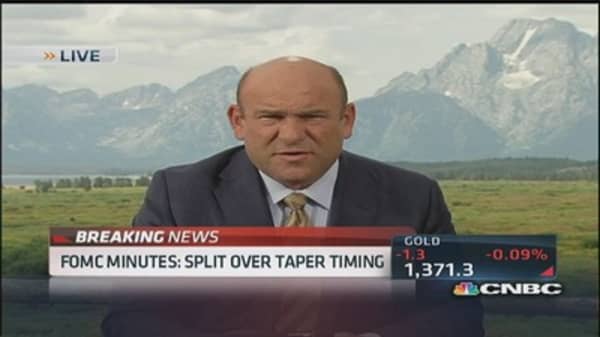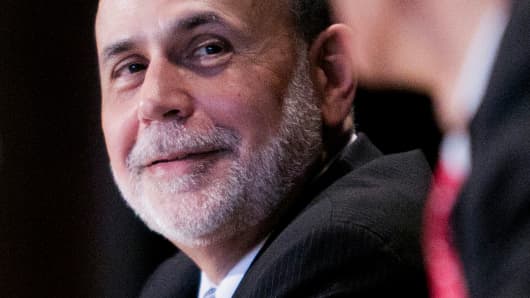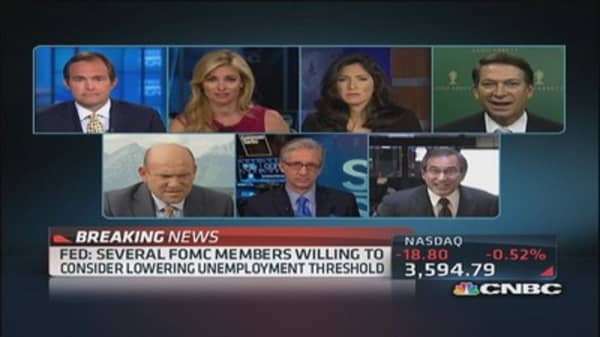"Participants were satisfied that investors had come to understand the data-dependent nature of the Committee's thinking about asset purchases."
Get the full minutes here.
Central bank officials revised their longer-term economic projections slightly upward during the meeting, but expressed concern about the effect fiscal policy would have.
"The staff viewed the uncertainty around the forecast for economic activity as normal relative to the experience of the past 20 years," the minutes said. "However, the risks were still viewed as skewed to the downside, in part because of concerns about the situation in Europe and the ability of the U.S. economy to weather potential adverse shocks."
Stocks have experienced a rocky August as concerns grow that the QE wheels are beginning to grind to a halt, albeit slowly.
Wall Street has ridden the three versions of the program launched since the financial crisis to a market gain approaching 150 percent.
But as worries grow over the end of asset purchases—money printing—interest rates have climbed and stocks have fallen.
To be sure, the S&P 500 is still up more than 15 percent in 2013, but some in the market worry that the aggressive rally is in jeopardy.
Committee members appeared to discuss market reaction to Fed policy at length, noting that "domestic and foreign asset markets were volatile at times during the intermeeting period, reacting to policy communications and data releases.
They pointed out improved sentiment toward financial institutions and said "stock prices of large domestic banks outperformed broader equity indexes."
Since that meeting, though, the KBW Bank Index has fallen nearly 2 percent.
_ By CNBC's Jeff Cox. Follow him @JeffCoxCNBCcom on Twitter.






